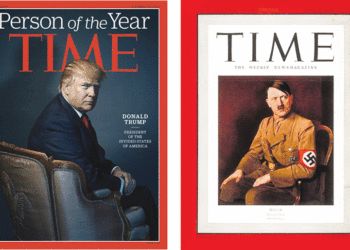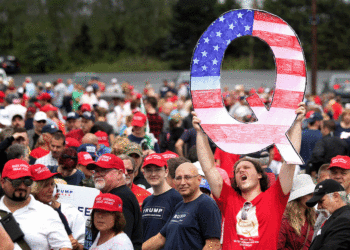Hanuka will come at the same time this year, the 25th of Kislev.
However, as you probably know (if you looked at the cover of this Hanuka special edition), in 2013, through a rare coincidence, the second night of Hanuka falls on Thanksgiving. (Check out the Thanksgivukkah page on Facebook.) In recent years, the minor Jewish holiday of Hanuka has landed on or near Christmas.
According to Teddy Weinberger (whose column appears on this page), the Hanuka-Thanksgiving overlap will not come again until 2070, and then again in 2165. So, beyond the excited apprehension of a dinner featuring turkey and latkes, what can we think about these two holidays coming together?
In a way, we will be celebrating two American holidays. Of course, Thanksgiving is a national holiday — declared so by Pres. Abraham Lincoln, in 1863, during the Civil War. And Hanuka, as celebrated by American Jews in the post-World War II period, has been blown out of proportion, to the extent that commentators have referred to it as the “Jewish Christmas.” The Festival of Lights, which celebrates the rededication of the ancient temple in Jerusalem, which had been desecrated by the Greek Assyrian conquerors, has taken on a secular and American aspect.
It is understandable that the first generation of Jews born in the United States, in the early part of the last century, would try to assimilate into the dominant society. Those Jews who married and raised families after World War II were mindful of the Shoah, the destruction of European Jewry by the Third Reich, and pursued a lifestyle consonant with the era’s materialistic aspirations. As their gentile neighbors marked the birth of Jesus with an orgy of spending on gifts (which has become the engine of the U.S. economy), Hanuka was similarly corrupted. Jews tried to keep up with the Cohens, who were keeping up with the Joneses.
And when I think about Thanksgiving, I recall that my Indian friends point out that every day is Thanksgiving — a day to thank the Creator, the Great Mystery, for the bounty of the natural world that sustains us.
For many years before coming to the American Jewish World as a staff writer, in 1995, I wrote for American Indian publications (and I still write a monthly column for The Circle, the Minneapolis-based Indian newspaper). I have heard references over many years to Thanksgiving having its roots in a 17th century massacre of East Coast Indians by the European colonists. However, after some cursory online research, I wonder if there is a factual basis for that claim.
The historical record does include an account of the Pilgrims’ first successful corn harvest, in November 1621, which was marked by a feast that included the Wampanoag chief Massasoit. This is said to be the “first Thanksgiving.” According to an account on the Web site of the History Channel, Gov. William Bradford sent some men on a “fowling” mission ahead of the feast; and the Wampanoag guests arrived with five deer. This account also notes: “Because the Pilgrims had no oven and the Mayflower’s sugar supply had dwindled by the fall of 1621, the meal did not feature pies, cakes or other desserts, which have become a hallmark of contemporary celebrations.”
Unfortunately, the comity between the colonists and the Indians was not sustained, and American history branched off on the course of Manifest Destiny, which led to the dispossession of the original inhabitants of this land. This situation is still unresolved, and I have plenty to write about, as far as the continuing depredations against Indian peoples.
And then there’s the Jewish roots of Thanksgiving. In an essay published recently in the Forward, Rabbi Gerald L. Zelizer, of Congregation Neve Shalom in Metuchen, N.J., writes, “American Thanksgiving had a close affinity to biblical Sukkot. Both holidays included the theme of giving thanks for a bountiful harvest. It’s likely that the pilgrims who linked their migration and experience with the ancient Israelites learned to thank God for their harvest from the stories they read in what they called the Old Testament.”
Zelizer also points out that “Sukkot, in turn, was very much linked to Hanukkah. In fact, Hanukkah may have actually been Sukkot. The Second Book of Maccabees records that after the Maccabees cleansed and rededicated the Temple, ‘the sanctuary was purified on the twenty-fifth of Kislev (Hanukkah). The joyful celebration lasted for eight days. It was like Sukkot, for they recalled how only a short time before they had kept the festival while living like animals in the mountains, they observed the joyful celebration, which lasted for eight days. And so they carried lulavim and etrogim and they chanted hymns to God, who had so triumphantly led them to the purification of the Temple.’”
The rabbi also comments that where Christmas and Hanuka are “thematically opposite,” Thanksgiving, Sukkot and Hanuka all share the theme of giving thanks. Thanksgiving and Sukkot are celebrations of the harvest, and Hanuka marks the previously mentioned rededication of the Temple.
It turns out that Hanuka and Thanksgiving fit together just like turkey and latkes.
The editors and staff of the American Jewish World wish all of our readers a very happy Hanuka — and a happy Thanksgiving, too.
— Mordecai Specktor / editor [at] ajwnews [dot] com
(American Jewish World 11.22.13)


















